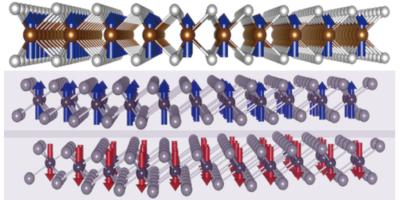Researchers from Cornell University managed to control the valley (orbital angular momentum) of electrons in a material by using electrical inputs to manipulate the magnetism of an adjacent material.

The device is built from a 2D tungsten diselenide (WSe2), a material whose energy landscape has valleys, atop a few atomic layers of chromium triiodide ( CrI3), a material whose magnetism can be electrically altered. The researchers are now looking for an alternative electrically-controlled magnetism material that will behave in a similar way at room temperatures.
They then changed the voltage across the CrI3 layers and measured the population of the WSe2 valleys using a technique that monitored the spin direction of light that the WSe2 emitted when illuminated by a laser. They found that the direction changed when the voltage was applied, indicating a switch in the semiconductorâs filled valley. The CrI3 layer is magnetic only at around 60 K, so the team says that their next step is to find a material that would allow valley sorting at room temperature.